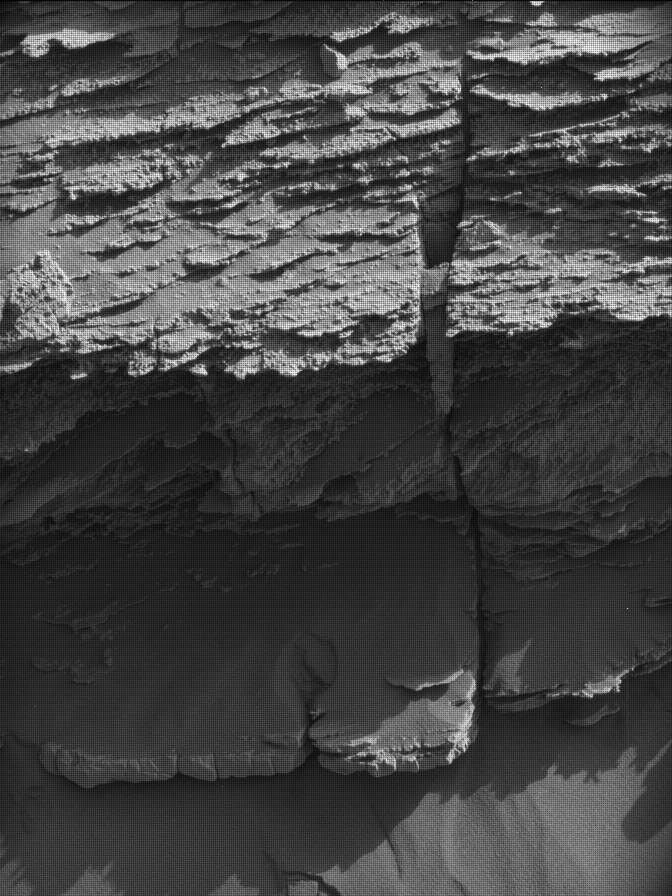I got up before dawn again today, and was treated to a beautiful view of the crescent Moon, Venus, Mars, and Jupiter in the eastern sky. I hadn't seen Mars since it emerged from behind the Sun following solar conjunction last June (it was cloudy yesterday morning), and its dimness reminded me of how far away Mars is right now: 351 million kilometers or 218 million miles. It takes 20 minutes for commands sent from Earth to get to MSL, at the speed of light, and another 20 minutes for data to be sent back from Mars to Earth. We've gotten used to communicating with the rover over such great distances, but it's amazing that the link has been so reliable.
The Sol 1127 data received this morning show that the MAHLI wheel imaging and the 7-meter drive completed successfully, and initial analysis of the wheel images show no significant changes in wheel wear. The drive placed the rover within reach of the fracture of interest, and as predicted we received just enough data to allow us to select remote sensing targets. So the Sol 1128 plan begins with ChemCam and Mastcam observations of "Benchmark," "Greenhorn," and "Pilgrim" to see if they would be good targets for more detailed investigation. Later in the day, Navcam will acquire a full panorama and search for dust devils and clouds. Then MAHLI will be used to take images of Greenhorn and Pilgrim from 35 centimeters away, to help the Rover Planners determine whether they can be drilled.
by Ken Herkenhoff
Dates of planned rover activities described in these reports are subject to change due to a variety of factors related to the Martian environment, communication relays and rover status.
Written by Ken Herkenhoff, Planetary Geologist at USGS Astrogeology Science Center



































